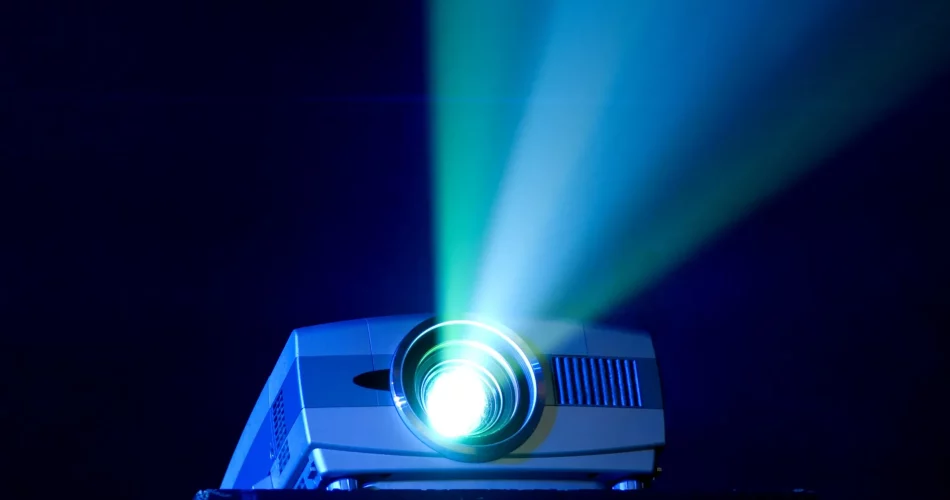If you have a laptop and a desire to project images or videos onto a large screen, then you may be wondering how to turn your laptop into a big screen projector. Fortunately, with the right tools and a few simple steps, you can easily turn your laptop into a powerful projector capable of projecting images and videos onto a big screen. In this article, we will guide you through the steps to turn a laptop into a big screen projector.
What You Will Need:
To turn your laptop into a big screen projector, you will need the following:
- A laptop running on Windows or Mac OS
- An HDMI cable or VGA cable (depending on your laptop and projector’s ports)
- A projector
- A big screen or wall for projection
Step 1: Check Your Laptop’s Ports
Before you can turn your laptop into a big screen projector, you need to check your laptop’s ports to determine which type of cable you need to connect it to the projector. Most laptops have either an HDMI port or a VGA port, and some have both. Here’s how to check your laptop’s ports:
- Look at the sides or back of your laptop for a rectangular port labeled “HDMI” or “VGA”.
- If you see an HDMI port, you will need an HDMI cable to connect your laptop to the projector. If you see a VGA port, you will need a VGA cable.
- If your laptop has both an HDMI port and a VGA port, you can use either cable depending on your projector’s ports.
Step 2: Connect Your Laptop to the Projector
Once you have determined which cable you need to connect your laptop to the projector, you can proceed to connect the two devices. Here’s how to connect your laptop to the projector:
- Turn off both your laptop and the projector.
- Connect one end of the HDMI or VGA cable to your laptop’s HDMI or VGA port.
- Connect the other end of the cable to the corresponding port on the projector.
- Turn on the projector and select the input source that corresponds to the port you connected the laptop to (e.g., HDMI 1 or VGA).
- Turn on your laptop and wait for it to detect the projector. If your laptop does not automatically detect the projector, you may need to change your display settings.
Step 3: Adjust Your Display Settings
Once you have connected your laptop to the projector, you may need to adjust your display settings to ensure that the projected image is the right size and orientation. Here’s how to adjust your display settings:
For Windows Users:
- Right-click on your desktop and select Display settings.
- Under the Display settings, select the projector as your second display.
- Adjust the resolution, orientation, and scaling as needed to optimize the projected image.
- Click on the Apply button and then click OK to save the changes.
For Mac Users:
- Click on the Apple menu and select System Preferences.
- Click on Displays.
- Click on the Arrangement tab and select the Mirror Displays checkbox.
- Adjust the resolution and scaling as needed to optimize the projected image.
- Close the Displays window to save the changes.
Step 4: Project Your Images and Videos
Now that you have connected your laptop to the projector and adjusted your display settings, you can start projecting your images and videos onto the big screen. Here’s how to project your images and videos:
- Open the image or video that you want to project on your laptop.
- Click on the Full Screen button to expand the image or video to full screen.
- Use your laptop or a remote control to play and pause the image or video as needed.
- Adjust the focus and zoom on the projector to optimize the projected image.
Step 5: Optimize Your Audio Settings
If your laptop has audio capabilities, you can also optimize your audio settings to project audio through the projector’s speakers or a separate audio system. Here’s how to optimize your audio settings:
For Windows Users:
- Right-click on the Volume icon in the taskbar and select Sounds.
- Click on the Playback tab.
- Select the audio output device that corresponds to the projector or audio system.
- Click on Set Default and then click OK.
For Mac Users:
- Click on the Apple menu and select System Preferences.
- Click on Sound.
- Click on the Output tab and select the audio output device that corresponds to the projector or audio system.
- Close the Sound window to save the changes.
Step 6: Disconnecting Your Laptop from the Projector
When you are finished projecting your images and videos, you need to properly disconnect your laptop from the projector to avoid damage to the ports or cables. Here’s how to disconnect your laptop from the projector:
- Turn off your laptop and the projector.
- Unplug the HDMI or VGA cable from your laptop and the projector.
- Store the cable in a safe place to avoid damage.
- Cover the projector to protect it from dust and other debris.
Turning your laptop into a big screen projector is a simple and affordable way to project images and videos onto a big screen. With just a few simple steps, you can connect your laptop to a projector and start projecting your content onto a big screen. Remember to adjust your display and audio settings as needed to optimize your projected image and sound. When you are finished projecting, make sure to properly disconnect your laptop from the projector to avoid damage to the ports or cables. With these tips and tricks, you can enjoy a big screen experience from the comfort of your own home or office.

